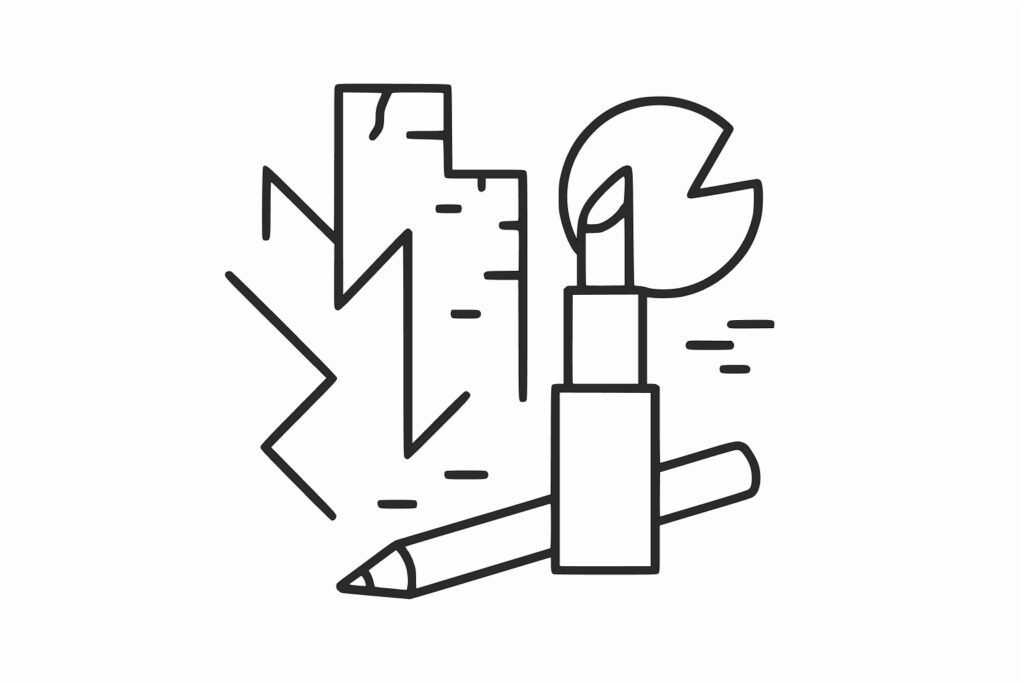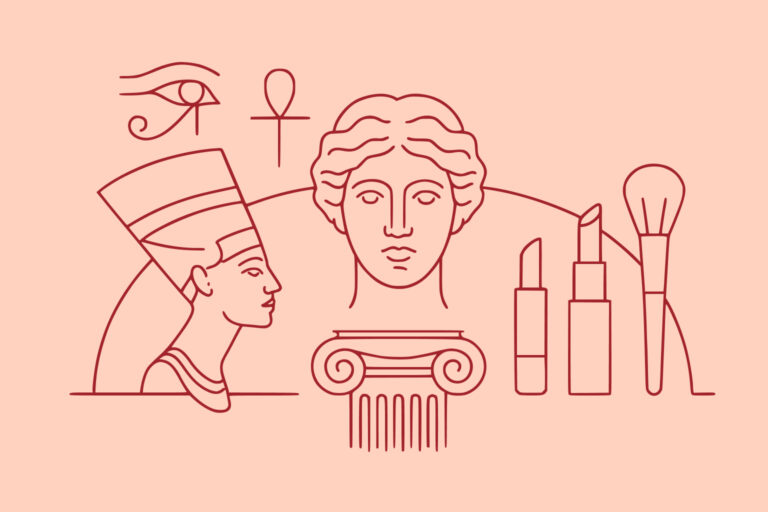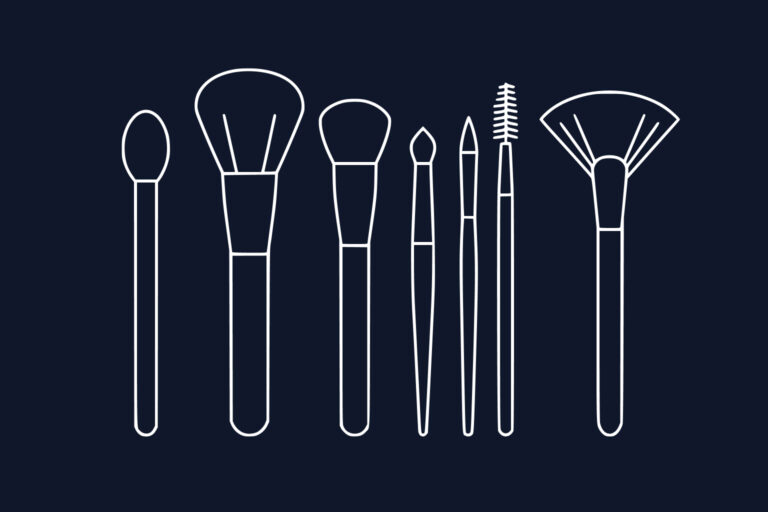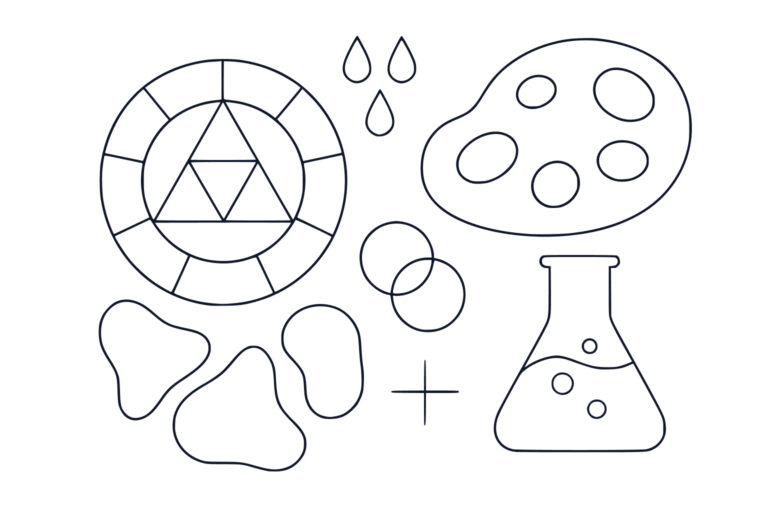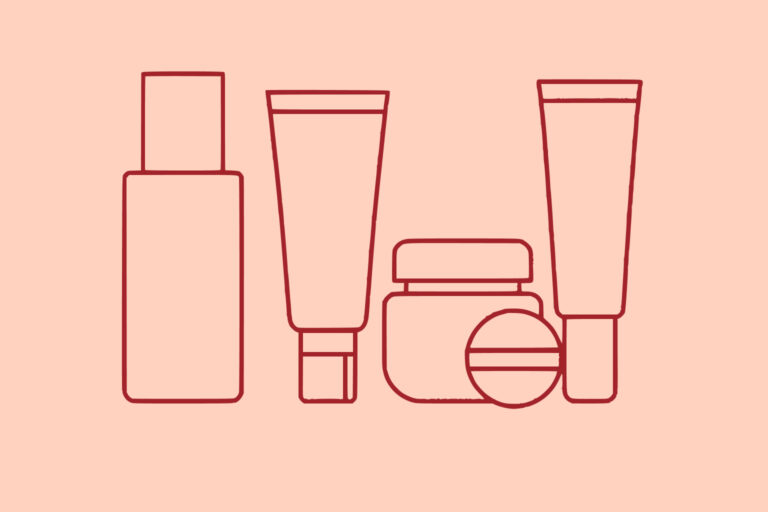1990s Grunge and Minimalist Beauty: The Decade of Authentic Rebellion
Published by Professional Makeup Artist London
The 1990s marked a dramatic rejection of the maximalist beauty culture that had dominated the 1980s, embracing instead an aesthetic of deliberate imperfection, authentic rebellion, and understated sophistication. This decade witnessed the emergence of two seemingly contradictory but ultimately complementary movements: grunge’s anti-establishment authenticity and minimalism’s refined simplicity. From Seattle’s music scene to Calvin Klein’s runways, 1990s beauty challenged conventional notions of glamour and perfection, establishing new paradigms that prioritised individual expression over prescribed standards. Understanding this pivotal decade reveals how cultural backlash, economic uncertainty, and generational change can create beauty trends that deliberately subvert established norms whilst creating their own powerful aesthetic statements.
The Grunge Revolution: Beauty as Anti-Statement
The grunge movement that emerged from Seattle’s music scene in the early 1990s fundamentally challenged beauty culture by embracing deliberate imperfection, authentic expression, and rejection of commercial glamour standards.
Grunge beauty philosophy centred on the concept of “effortless dishevelment”—looks that appeared uncontrived whilst actually requiring considerable skill and understanding to achieve effectively. This represented a sophisticated form of anti-beauty that was actually highly calculated in its apparent casualness.
The signature grunge makeup look featured smudged eyeliner, often applied with fingers rather than brushes to create the imperfect, lived-in appearance that defined the aesthetic. This technique required understanding of how to create controlled imperfection that appeared authentic rather than sloppy.
Dark, matte lip colours became central to grunge beauty, with deep browns, burgundies, and blackened reds creating the moody, rebellious effects that complemented the movement’s anti-establishment philosophy. These colours required precise application despite their deliberately imperfect appearance.
Pale, matte complexions were essential to grunge beauty, creating the ethereal, otherworldly appearance that suggested artistic sensitivity and rejection of healthy, sun-kissed ideals. This look required sophisticated foundation techniques to achieve the desired flat, porcelain-like finish.
The grunge movement’s influence extended beyond specific techniques to encompass an entire approach to beauty that prioritised authenticity and individual expression over conformity to established standards.
Understanding how subcultural movements influence mainstream beauty provides valuable context for contemporary approaches to alternative and artistic makeup application.
Heroin Chic: The Controversial Aesthetic
The mid-1990s saw the emergence of “heroin chic,” a controversial beauty trend that celebrated extreme thinness, pale skin, and an overall appearance of fragility and vulnerability that challenged traditional notions of healthy beauty.
Heroin chic makeup emphasised dark, sunken eyes created through strategic use of dark eyeshadows and eyeliners that created the appearance of exhaustion and emotional intensity. This required sophisticated understanding of eye anatomy and shading techniques.
The pale, almost translucent complexions associated with heroin chic were achieved through light foundation shades and strategic highlighting that created an ethereal, otherworldly appearance. This technique required careful colour matching and application to avoid appearing simply unhealthy.
Lip colours for heroin chic ranged from nude to deep brown, often applied in ways that appeared bitten or naturally stained rather than perfectly applied. This required understanding of how to create natural-looking imperfection through deliberate technique.
The controversy surrounding heroin chic reflected broader cultural concerns about beauty standards, health, and the influence of fashion imagery on young people’s self-perception and behaviour.
Despite its controversial nature, heroin chic influenced makeup techniques and aesthetic preferences that continue to appear in contemporary fashion and editorial beauty work.
The heroin chic phenomenon demonstrated how extreme beauty trends could generate cultural debate whilst simultaneously influencing mainstream aesthetic preferences and industry practices.
Minimalist Sophistication: Less is More
Parallel to grunge’s rebellious anti-beauty, the 1990s also embraced minimalist sophistication that celebrated refined simplicity, natural enhancement, and understated elegance as alternatives to both grunge rebellion and 1980s excess.
Minimalist makeup focused on perfecting natural features rather than transforming them, requiring sophisticated understanding of colour matching, subtle enhancement techniques, and the art of appearing effortless whilst actually being highly polished.
The “no-makeup makeup” look that became popular during this period required advanced technical skills to create the appearance of natural perfection. This involved strategic concealer placement, subtle colour enhancement, and careful attention to creating flawless but natural-looking skin.
Neutral colour palettes dominated minimalist beauty, with beiges, taupes, and soft pinks creating sophisticated effects that enhanced rather than competed with natural colouring. These subtle colours required understanding of undertones and colour theory to achieve harmonious results.
The minimalist approach to beauty emphasised quality over quantity, with focus on fewer, better products that provided superior performance and natural-looking results. This influenced product development towards more sophisticated formulations and packaging.
Minimalist beauty techniques required precision and restraint, with success measured by the ability to enhance natural beauty without obvious artifice. This demanded higher levels of technical skill than more obvious makeup applications.
The influence of minimalist beauty established foundations for contemporary natural makeup trends and the clean beauty movement that continues to shape industry development.
The Brown Lipstick Phenomenon
Brown lipstick became the defining cosmetic trend of the 1990s, representing both grunge rebellion and minimalist sophistication whilst challenging the red lip tradition that had dominated beauty culture for decades.
The range of brown lip colours available during the 1990s was unprecedented, from light nude browns to deep chocolate shades that could create dramatically different effects depending on application and styling context.
Brown lipstick application required understanding of undertones and colour coordination to achieve flattering results. The wrong shade of brown could appear muddy or unflattering, whilst the right shade could create sophisticated, modern effects that enhanced natural beauty.
The popularity of brown lipstick reflected broader cultural shifts towards earth tones, natural colours, and rejection of the bright, artificial colours that had characterised previous decades.
Different brown lip colours served different aesthetic purposes, with lighter browns supporting minimalist looks whilst darker browns complemented grunge and alternative styling.
The brown lipstick trend influenced product development, with cosmetics companies expanding their ranges to include sophisticated brown formulations that had been previously overlooked or undervalued.
Understanding how specific products can define entire decades provides insights into contemporary lipstick trends and colour preferences.
Hair: From Grunge Texture to Sleek Minimalism
1990s hairstyles reflected the decade’s dual aesthetic movements, with grunge-inspired texture and volume contrasting with sleek, minimalist cuts that emphasised precision and simplicity.
Grunge hair was characterised by deliberately messy textures, uneven lengths, and colours that appeared to have grown out or faded naturally. This look required understanding of how to create controlled chaos that appeared authentic rather than contrived.
The “Rachel” haircut, popularised by Jennifer Aniston’s character on Friends, became one of the decade’s most requested styles. This layered, highlighted look required significant technical skill to cut and style properly whilst appearing effortless and natural.
Slip dress culture influenced hair styling towards sleek, straight styles that complemented the decade’s minimalist fashion aesthetic. These looks required understanding of how to create smooth, polished effects using the styling tools and products available during the period.
Hair colouring during the 1990s moved towards more natural-looking effects, with chunky highlights and lowlights that created dimension without appearing obviously artificial. This required advanced colouring techniques and understanding of how different tones worked together.
The decade saw the emergence of more diverse hair textures and styles being celebrated in mainstream culture, with natural African American hair textures gaining increased visibility and acceptance.
Hair accessories during the 1990s were minimal and functional, with simple clips, headbands, and scrunchies serving practical purposes without overwhelming the overall aesthetic.
Supermodel Influence and Beauty Democratisation
The 1990s supermodel phenomenon significantly influenced beauty trends whilst simultaneously making high-fashion beauty more accessible to mainstream consumers through increased media coverage and product endorsements.
Models like Kate Moss, Naomi Campbell, and Cindy Crawford became beauty icons whose looks were widely studied and copied. Their influence extended beyond fashion to encompass broader cultural attitudes about beauty and self-presentation.
The emergence of Calvin Klein’s advertising campaigns featuring models like Kate Moss established new beauty standards that emphasised natural beauty, youth, and authenticity over the polished perfection of previous decades.
Supermodel makeup looks were characterised by natural enhancement rather than dramatic transformation, requiring sophisticated techniques to achieve the effortless perfection that appeared in fashion photography.
The influence of supermodels on beauty culture was amplified by increased media coverage, with fashion magazines featuring detailed beauty tutorials and product recommendations that made professional techniques accessible to home users.
Celebrity makeup artists gained increased recognition during this period, with professionals like Kevyn Aucoin becoming public figures whose techniques influenced mainstream beauty culture.
The democratisation of beauty knowledge through media coverage and product availability made sophisticated makeup techniques more accessible whilst maintaining the aspirational quality that drove consumer interest.
Technology and Product Innovation
The 1990s brought significant technological advances in cosmetic formulation and application tools that supported the decade’s demanding requirements for both natural-looking enhancement and alternative aesthetic expression.
Foundation technology evolved to provide better colour matching and more natural finishes, essential for achieving the flawless but authentic-looking complexions that both minimalist and grunge aesthetics required in different ways.
Lipstick formulations expanded to include the wide range of brown and neutral colours that defined the decade, with improved staying power and more sophisticated colour development that created flattering effects across different skin tones.
Eyeshadow technology advanced to provide better blendability and more subtle colour payoff, essential for creating the natural-looking enhancement that characterised minimalist makeup approaches.
Hair care products evolved to support both the textured, messy styles associated with grunge and the sleek, polished looks that complemented minimalist fashion. This required formulations that could provide hold without stiffness or obvious product buildup.
Application tools became more sophisticated, with improved brushes and implements that allowed for more precise and natural-looking results in both makeup and hair styling.
The technological innovations of the 1990s established many of the performance standards and product categories that define modern cosmetic development and consumer expectations.
Alternative Culture and Subcultural Influence
The 1990s saw increased influence of alternative and subcultural movements on mainstream beauty, with goth, punk, and rave cultures contributing techniques and aesthetic preferences that enriched the decade’s diverse beauty landscape.
Goth culture’s influence on mainstream beauty included dark lip colours, pale complexions, and dramatic eye makeup that created mysterious, romantic effects. These techniques required understanding of how to create dramatic impact whilst maintaining wearability.
Rave culture contributed bright, artificial colours and experimental application techniques that contrasted with the decade’s dominant natural and minimalist trends. This influence demonstrated how subcultural movements could provide alternative aesthetic options.
The emergence of body modification and alternative beauty practices during this period challenged conventional notions of beauty and self-expression, creating new possibilities for individual identity and artistic statement.
Punk influences continued to affect mainstream beauty through edgy styling choices, unconventional colour combinations, and deliberate imperfection that complemented grunge aesthetics.
The integration of subcultural influences into mainstream beauty culture created more diverse and inclusive approaches to cosmetics and self-expression that continue to influence contemporary trends.
Understanding how alternative cultures influence mainstream beauty provides valuable context for contemporary approaches to creative and artistic makeup application.
Economic Factors and Consumer Behaviour
The economic conditions of the 1990s, including recession, corporate downsizing, and changing employment patterns, significantly influenced beauty spending patterns and aesthetic preferences.
Economic uncertainty led to more conservative beauty spending, with consumers seeking versatile products that could create multiple looks and provide good value for money. This influenced product development towards multi-purpose formulations and neutral colour palettes.
The decade’s emphasis on authenticity and anti-materialism reflected broader cultural reactions to the conspicuous consumption of the 1980s, with beauty trends that deliberately rejected obvious luxury and status signalling.
Drugstore beauty products gained increased respect and market share during this period, as consumers discovered that less expensive products could achieve results comparable to luxury alternatives.
The emergence of alternative retail channels, including specialty beauty stores and early online shopping, began to change how consumers discovered and purchased beauty products.
Economic factors influenced beauty marketing strategies, with brands emphasising value, versatility, and authenticity rather than luxury and status to appeal to cost-conscious consumers.
The economic influences on 1990s beauty culture established patterns of consumer behaviour and industry response that continue to shape contemporary beauty markets and product development.
Media and Cultural Representation
The 1990s saw significant changes in media representation and cultural diversity that influenced beauty standards and expanded definitions of attractiveness and style.
Television shows like Friends, Seinfeld, and The X-Files featured characters with diverse beauty looks that influenced mainstream trends whilst representing different lifestyle and aesthetic preferences.
The emergence of alternative music videos and independent film created new platforms for beauty experimentation and non-conventional aesthetic expression that influenced broader cultural attitudes.
Fashion magazines began to feature more diverse models and beauty looks, reflecting changing social attitudes about representation and inclusion in beauty culture.
The influence of international fashion and beauty began to increase during this period, with Japanese, European, and other non-American aesthetic influences gaining recognition and adoption.
Celebrity culture became more accessible and relatable during the 1990s, with stars appearing more natural and approachable in their beauty choices rather than maintaining the polished perfection of previous decades.
The media changes of the 1990s established precedents for contemporary approaches to beauty representation and cultural diversity that continue to influence industry practices and consumer expectations.
Professional Beauty and Industry Evolution
The 1990s brought significant changes to professional beauty services and industry structure, with new approaches to makeup artistry and beauty education that reflected the decade’s diverse aesthetic requirements.
Makeup artistry gained increased recognition as a creative profession during this period, with artists like Kevyn Aucoin, Pat McGrath, and François Nars becoming celebrities whose techniques influenced mainstream beauty culture.
Beauty education evolved to address the technical demands of both natural enhancement and alternative aesthetic expression, with training programmes that emphasised versatility and individual creativity.
The emergence of specialty beauty retailers and niche brands created new opportunities for professional artists and consumers seeking alternatives to mainstream beauty options.
Professional makeup services became more accessible and affordable during this period, with increased availability of freelance artists and salon services that catered to diverse aesthetic preferences.
The beauty industry’s approach to marketing and product development became more sophisticated, with increased focus on consumer research and trend forecasting that could anticipate and respond to changing preferences.
The professional developments of the 1990s established foundations for contemporary beauty industry structure and practices that continue to influence how services are delivered and products are developed.
International Influence and Global Trends
The 1990s marked the acceleration of global beauty culture exchange, with international influences becoming more prominent in mainstream beauty trends and product development.
Japanese beauty culture gained significant influence during this period, with minimalist aesthetics and innovative product formulations that affected global beauty standards and consumer expectations.
European fashion and beauty trends continued to influence international markets, with French and Italian approaches to natural enhancement and sophisticated colour palettes affecting global product development.
The emergence of global beauty brands and international marketing strategies created more standardised beauty practices whilst also celebrating cultural diversity and local preferences.
International travel and communication improvements allowed for faster spread of beauty trends across cultural boundaries, creating more homogenised global beauty culture whilst maintaining regional variations.
The influence of international pop culture, particularly from the US and UK, spread beauty trends through music videos, films, and television programmes that reached global audiences.
This globalisation of beauty culture established patterns of international influence and cultural exchange that continue to shape contemporary beauty trends and industry practices.
Legacy and Modern Influence
The diverse beauty innovations of the 1990s continue to influence contemporary makeup and hairstyling, with many techniques and aesthetic principles remaining central to modern beauty culture.
The decade’s emphasis on natural enhancement and authentic self-expression established foundations for contemporary clean beauty and wellness movements that prioritise individual authenticity over prescribed standards.
Grunge beauty techniques continue to influence editorial and fashion makeup artistry, with deliberately imperfect application methods and alternative colour palettes remaining relevant for creative and artistic expression.
The minimalist approach to beauty that emerged during this period established precedents for contemporary natural makeup trends and the “no-makeup makeup” looks that dominate social media and everyday beauty culture.
Product innovations from the 1990s, particularly in foundation formulation and neutral colour development, established many of the performance standards and aesthetic preferences that define modern cosmetics.
The decade’s integration of subcultural influences and alternative aesthetics created precedents for the diverse, inclusive approach to beauty that characterises contemporary culture.
Understanding this historical development provides valuable context for contemporary approaches to beauty culture evolution and the ongoing tension between natural enhancement and artistic expression.
Recreating 1990s Looks Today
Modern makeup artists and beauty enthusiasts can recreate authentic 1990s looks using contemporary products and techniques adapted from historical methods.
Achieving the grunge aesthetic requires understanding of how to create controlled imperfection that appears authentic rather than sloppy. Modern products offer better performance and easier application whilst maintaining the deliberately imperfect effects that defined the style.
The brown lipstick looks that characterised the decade can be recreated using contemporary formulations that provide better colour payoff, longer wear, and more flattering undertones than 1990s products.
Minimalist makeup techniques from this period can be achieved using modern products that offer superior colour matching and natural-looking enhancement whilst maintaining the understated sophistication that defined the aesthetic.
The textured hair styles associated with grunge can be created using contemporary styling products and techniques that provide better hold and more controlled results than period formulations.
Understanding the fundamental principles behind 1990s techniques allows modern artists to adapt these looks for contemporary clients whilst maintaining their essential character and cultural significance.
Conclusion
The 1990s beauty revolution represents one of the most complex and influential periods in cosmetic history, demonstrating how cultural backlash, economic uncertainty, and generational change can create beauty trends that deliberately challenge established norms whilst establishing their own powerful aesthetic statements. From grunge rebellion to minimalist sophistication, this decade established new paradigms for authentic self-expression and individual creativity that continue to shape contemporary beauty culture.
The period’s innovations in natural enhancement techniques, alternative aesthetic expression, and professional artistry established technical and cultural foundations that remain central to modern beauty practice. The decade’s integration of subcultural influences, international trends, and diverse representation created precedents for the inclusive approach that characterises contemporary cosmetics.
Understanding the 1990s beauty revolution provides valuable context for appreciating contemporary trends and techniques. The decade’s emphasis on authenticity, individual expression, and rejection of prescribed standards continues to influence how we approach beauty and self-presentation today.
Whether exploring the deliberate imperfection of grunge aesthetics or the refined simplicity of minimalist beauty, the 1990s offers rich inspiration and practical knowledge that remains vital for contemporary beauty practice and cultural understanding of how social movements and generational change shape aesthetic preferences and industry development.
